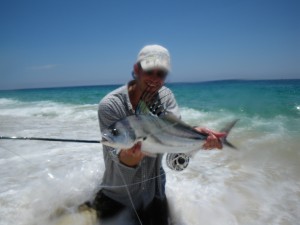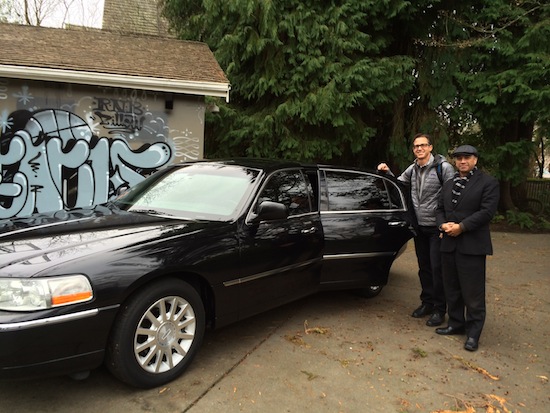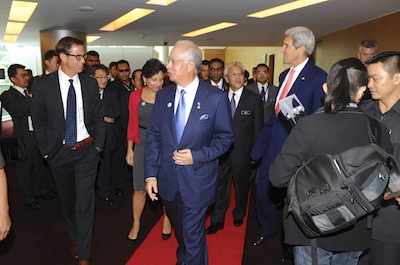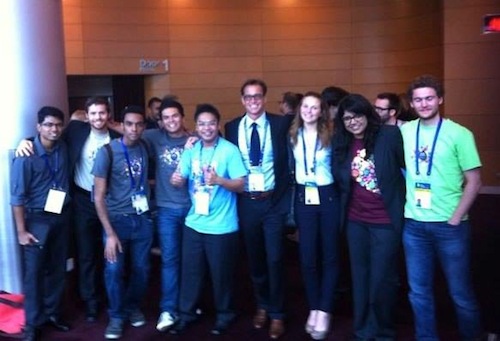I have 50k photos in my iPhoto Library, 25k of which are synched to my iPhone and a smorgasbord of other iOS devices in my family. I’ve put hundreds of hours into creating metadata in iPhoto on my Macbook Pro through multiple generations of mediocre photo organizing features. And now, the latest iOS7 photo app on my iPhone 5 decided, once again, to try a new photo grouping UI with the new concept of “Collections”, totally ignoring all the work I put in organizing my photos into logical “Events”. I’d guess I am part of a very small % of users who even uses all of the rating, face recognition, GPS-locating, and folder/album organizing features of iPhoto.

Despite all of this, I still find myself making my dinner party friends motion sick as I thumb through screen after screen of photos looking for that killer photo of the Roosterfish I caught in Cabo on my 40th birthday (a while ago) with the new Sage fly rod my buddy Nick gave me as a present.
So, I have a simple feature suggestion — Favorites. Enable a universal one touch Favorite button on all photos. This way, when I find my go-to story telling photos, I can quick tag them as a Favorite, storing them in a folder that will need to be easily accessible on all my devices. The next time I try to go fishing for that same photo, everyone is spared the awkward search time, because it’s in my favorites folder.
More importantly, favorites will mean I don’t have to grind my teeth politely while you scroll your photos, trying to show me up with the blue marlin you say you landed 5 years ago…
A month or so ago, I had dinner with a group of entrepreneurs at the Goldman Internet Conference in Vegas. Among them was Travis Kalanick, the colorful and talented Founder/CEO of Uber. Travis is a man on a mission to revolutionize how we get around, as I’m sure you’re all well aware. I’ve been a customer from the early days of Uber Seattle, but I really only used it as a Taxi replacement – once a week on a Saturday night out and the occasional trip to the airport.
At dinner, Travis tried to convince me that Uber was changing home values in certain neighborhoods based on ease of Uber access. I need to speak with Zillow’s Chief Economist, Dr. Stan Humphries, about using Uber availability as an input into the Zestimate algorithm, but I’m a little dubious.
That said, Travis did convince me to get rid of my car.
For the 3rd week of December, I hid my keys and used nothing but Uber. Everywhere. To and from work. To pick the kids up from basketball practice. Last minute Christmas shopping. Out to dinner. The Seahawks game. Everywhere.

Uber driver, Erick, and me at my garage tagged by street artist, Reach
A few observations:
- I walked more. Totally unexpected. Working downtown, there are always errands to run after work. It’s way easier to walk out of my building to Pike Place Market to pick up the smoked salmon, than it is to drive and deal with parking. I enjoy walking, but I don’t usually have time to walk the whole 3 miles to my Madison Park home. With Uber, I can walk 1 mile through the city, make a stop or 2 along the way, and then call in the air strike, getting picked up in stride. Loved it.
- I saved time. I’m sure Travis has data on this, but I’ll bet 1/3rd of my transport time when “driving” is actually spent parking. My mean time from my office desk seat to the back seat of an Uber driving away from my building was 2 minutes. In my own car, this time is 9 minutes. I have to take another elevator down to sub-level 3. I have to wait in line to get out of my garage as the policeman waves a line of commuters coming out of the garage into traffic. Time savings for city parking when going out to dinner or running errands is huge, as well. Big win.
- I spent more money. I think. My Uber bill for the week totaled $410. If I had a $110k Mercedes S class, then Uber would be cheaper when taking depreciation into consideration. However, I have a 2013 Ford Mustang GT. It’s a 5.0L tricked out California Special Edition, but even with all the bells and whistles, it’s a Ford, and only cost me $42k. So, if I depreciate generously at $1k per month, plus gas, plus $300/mo in parking, Uber is still a bit more costly. Insurance and maintenance could push it over the line. Anyway, the expense is not a barrier. Close enough.
- I got more done. There are pros and cons to this one, but I was able to work in the back seat of my Uber. And read the paper. It was pretty nice.
- I talked to my Mom more. It’s way easier to have a real phone conversation in the car when you’re riding. My mom was happy. Me, too.
- I sent an Uber to pick up my son. 😐 He’s 14 and I tracked his progress like the NSA tracks Angela Merkel, but I still don’t think we’re supposed to use Uber this way. Regardless, it was awesome.
- I sneezed more. I have a really sensitive nose. At my request, no one in my family wears perfume. No smelly hand creams, etc. I get sneezy. I get headaches. I think these tree shaped air fresheners are a plague on the planet, and for whatever reason, about 1/3rd of Uber drivers think they need 3 to 5 of these evil smell trees in their cars. I give lower ratings on these cars, and I implore Travis here to make modest use of air fresheners an Uber policy going forward.
Am I going to get rid of my Mustang? Probably not. I love to drive and I don’t really have to make this tradeoff from an expense perspective.
But I will tell you this: I do now feel Uber is my own personal driver, and I’d guess 50% of my car trips are now Uber rides.
Travis conceived of and is leading nothing short of a transportation revolution. Well done.
In October, I took a trip to Kuala Lumpur, Malaysia where I had the honor of delivering a keynote address at the Fourth Annual Global Entrepreneurship Summit. I realized I hadn’t shared enough about this enlightening and rewarding experience that brought together more than 3,500 entrepreneurs from more than 130 countries.

Me, Sec Pritzker, Prime Minister Najib Razak, Amabassador Joseph Yun, and US Sec. Kerry
I didn’t know about the GES until I met U.S. Secretary of Commerce Penny Pritzker on a visit she made to Seattle Year-Up, a non-profit that helps young adults across the opportunity divide where I am a board director. She explained to me that GES was created by President Obama in the wake of the Arab Spring as a forum to help export American-style startup capitalism to rising economies throughout Asia, North Africa, and the Middle East. I’m a happy evangelist for entrepreneurship, I’d never been to Malaysia, and I knew that if the dates were right, I could lure an Australian surfing pal on a quick surf strike in Indonesia before the summit. So, when the invitation came, I happily said yes, sent my lonely blue suit to the dry cleaners, and started watching swell forecasts on MagicSeaweed.com.
The U.S. delegation in Malaysia was well represented by Secretary of State, John Kerry and Secretary Pritzker. Secretary Kerry kicked off the Summit and included a video message from President Obama. I had a great time creating and delivering my speech called “Power to the People” in which I talk about the common thread of consumer empowerment and marketplace transparency that runs through so many of my startups. I also talked about how important Good Government is in creating a healthy startup eco-system.

In addition to my speech, I was invited to participate in multiple events that exposed me to a large number of the young entrepreneurs participating from all corners of the globe. This included participating in a press conference and round table with Secretary Pritzker, as well as judging the final competition of the Global Startup Youth, possibly my favorite part of my 3 days. Global Startup Youth brought 500 young people, ages 16-25, from around the world and broke them into 50 teams. Each team had 48 hours to dream up and build a smartphone app and then present it in Shark Tank-like competition in front of the crowds. I did my best to be a more sensitive Mark Cuban. The raw energy and creativity coming out of the summit was truly awesome. I admit that I found myself sneaking out of the dignitary dinners with the guys in suits to find the Malaysian satay buffets that fueled the kids in t-shirts and flip-flops.

The rise of entrepreneurship in this part of the world feels like destiny to me, as long as some modicum of political stability predominates. I was reminded that none of us should take Good Government for granted. One that does its best to make sure the entrenched don’t tilt the playing field so steeply that new company creation is fruitless. In my speech, I talked about the important ingredients of a thriving ecosystem, and the first and most critical ingredient is Good Government. It is the soil in which our startups grow, fed by the sunshine of money and a river of talent coming out of our educational system. Despite frustration at times, we in the U.S. owe a great deal of our own business success to an unusually fair and transparent government.
As our world gets ever smaller and entrepreneurial spirit breaks through the binding chains of some of these legacy infrastructures that have stifled innovation and competition, inspiration and innovation will rise. In fact, I had the opportunity to look into the eyes of those making it a reality. Whether as a fellow entrepreneur, investor, educator, media representative, or government official, I highly recommend plugging in to the global rise of entrepreneurship. I came back from my trip energized and happy. The waves in Indonesia may have had a little to do with that, too.





